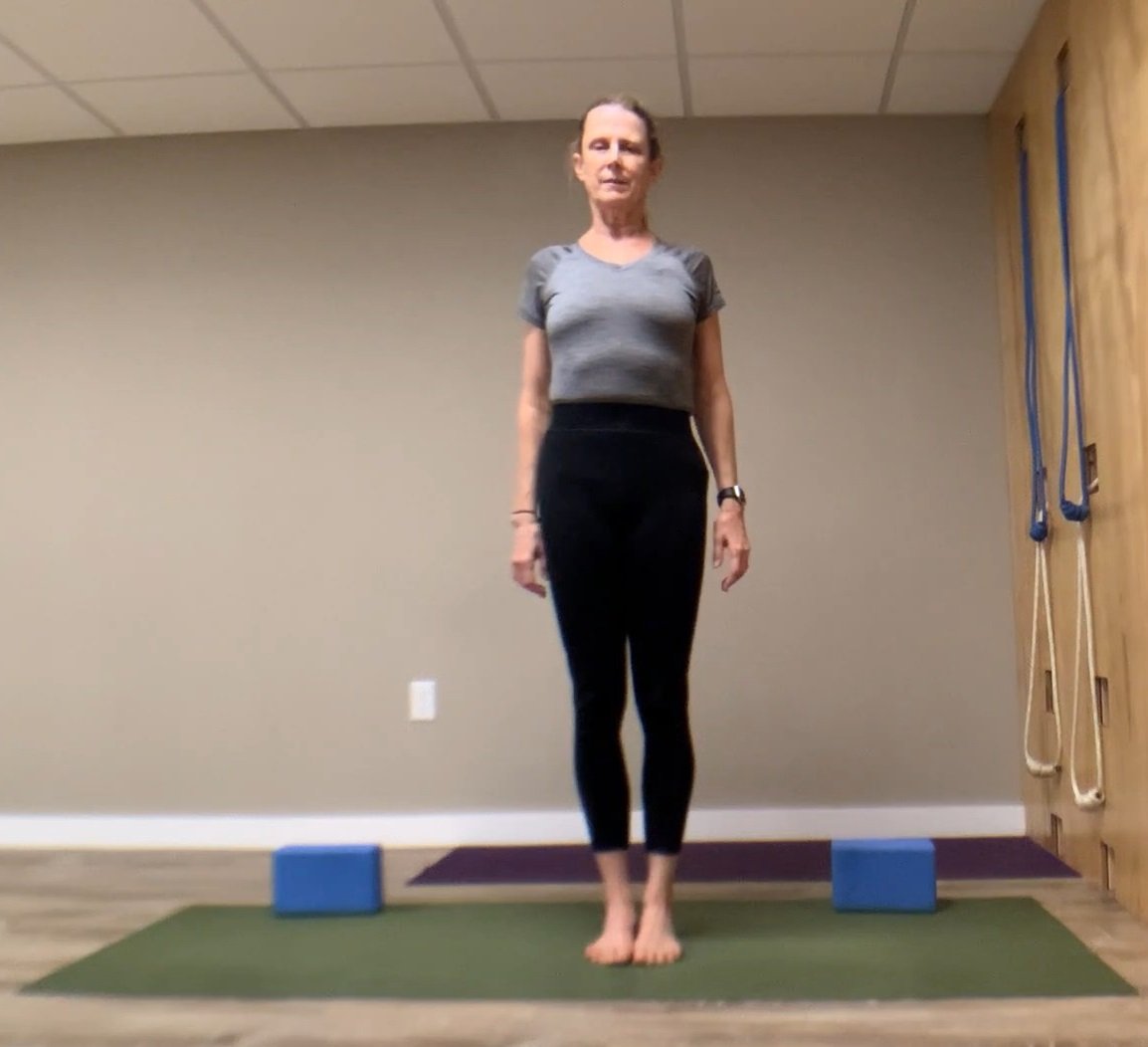Every pose is based on Tadasana. You’ve heard me say that before, but what does it mean?
Savasana by the Sea 2022 - Lewes DE
Are you a Beginner or an Intermediate Student?
Dwi Pada Viparita Dandasana
Restorative Practice – for when you are not feeling well.
Opening the Chest and Shoulders
Opening the Shoulders
About my yoga classes.
Can You Fix Rounded Shoulders?
Is yoga hurting your body? Or, is how you are practicing yoga hurting your body?
This is an important distinction.
I know that I have hurt my body practicing yoga by thinking I was doing the right action. Only to be helped by an experienced yoga teacher who could show me what I was doing wrong. Often, this is not intuitive.
When you are practicing yoga there are more things to consider than just the shape of the pose, or where the hand is, or how the foot is turned. It is also important to consider what you are doing while you are in the pose. This is why practicing on your own can often only take you so far. We all get into our own particular habits and ruts. It takes an experienced teacher to help us see ourselves more clearly.
I have been talking with a few students about engaging the buttocks in their poses. These conversations stem from concerns about low back discomfort to feeling a strain at the front of the thighs in the psoas. Questions like this are never easy to address in general because everyone is different. But, I will attempt to point out one possible cause of hip pain in yoga. It usually stems from one leg that likes to either externally or internally rotate more and might be a little weaker because of pain.
This week let’s look at an example of this in a common standing posture: Trikonasana (Triangle).
We often look at this pose from the front:
What most students see in this is that the legs are straight and the hand is on the floor or a block. But, what is happening when we look at this pose from the head side?
If you are not engaging your legs and your buttocks, your Trikonasana might look like this. Or, if you are not flexible enough to get your hand to the floor, you may compensate by winging the buttocks backward and moving the head forward.
In this picture I have my hand on the floor, but at the expense of compression in my front hip and overarching in my low back.
This is what Triangle should look like from head on:
This takes a lot of strength and flexibility to get the hand to the floor, or block. It also takes some understanding of what to do while in the pose. In this case, the front leg buttock is being held strongly against the body, keeping the hips in line with the torso and the lower back long. The head is back in line with the spine. The back hip is rolling backwards to open the front groin and chest, keeping the psoas from getting compressed between the femur and the pelvis. The body looks very two-dimensional, the way it should if you were looking down on the top of your head while you are standing in Tadasana.
Chances are, if you have hip pain on one side (or maybe both!) in the Standing Poses, it could be that your forward glutes are not engaged and your low back is over-arched. How can you check this out on yourself? Try doing Triangle Pose with your back against the wall. The front foot is about the thickness of a block away from the wall. The back heel is on the wall. The front leg buttock will be touching the wall but you can try to engage the buttocks under and move it slightly away from the wall as you roll the other buttock to try to touch the wall. Both shoulders and your head should be on the wall. You shouldn’t worry if you can’t touch the floor, that can come with repeated practice. (Or, if your hamstrings are very tight, you might need some other modifications)
The other standing postures such as Virabhadrasana II, Parsva Konasana and Ardha Chandrasana should have the same buttock/psoas engagement. This is especially true for Ardha Chandrasana as all of your weight is on one leg. If the buttocks are weak on the standing leg side, eventually this can become a real pain in the butt!
This might be something you can fix yourself if you love playing with your poses in your own practice. But this is often something that is more easily addressed within a private session as there are some manual adjustments that are extremely beneficial. Contact me if interested!












